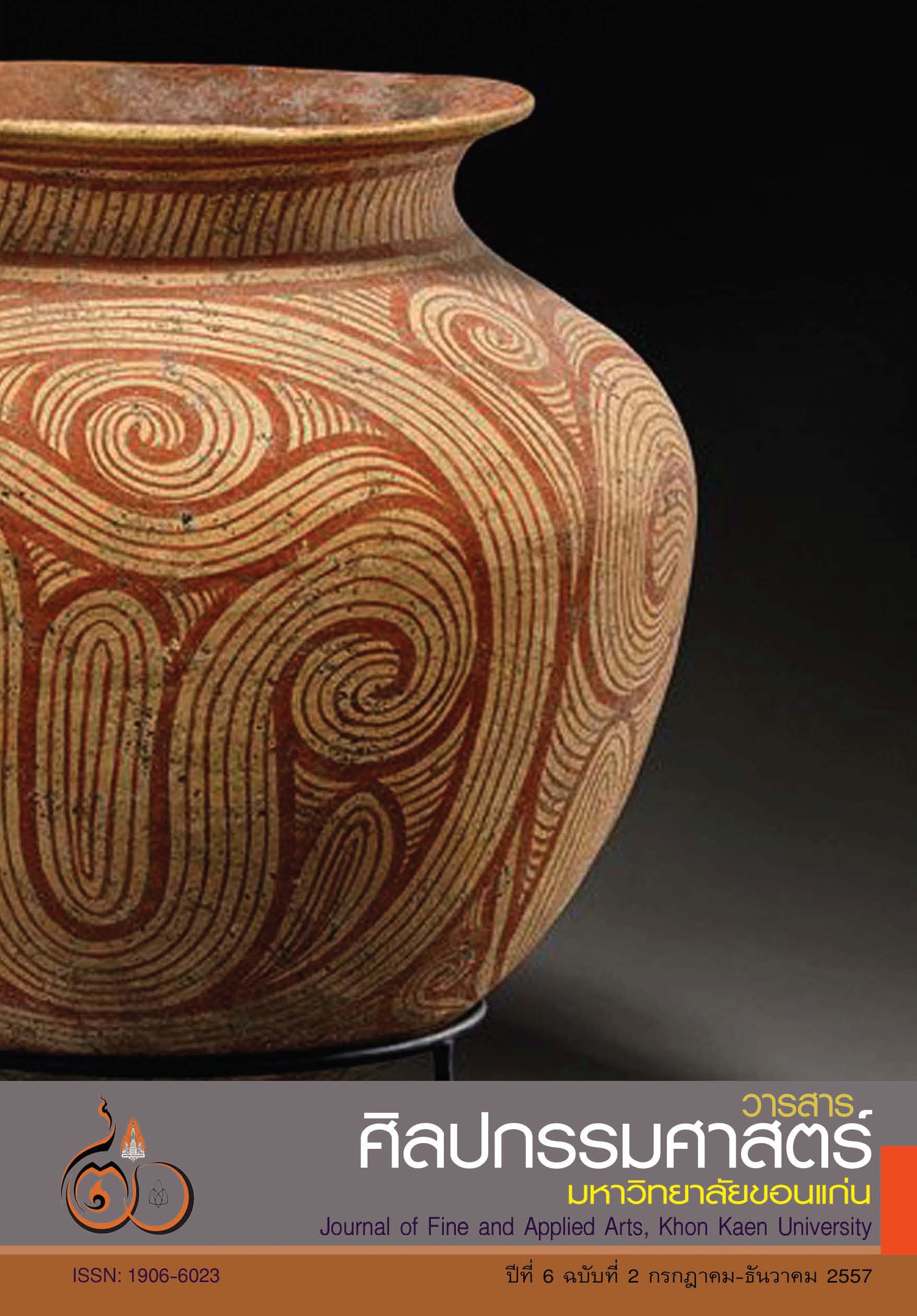ดนตรีและเพลงหน้าพาทย์ที่สื่อสัมผัสอารมณ์และจินตนาการ Music of the Na-phaat repertoire - the connection of emotion and imagination
Main Article Content
Abstract
บทความนี้นำเสนอผลจากการผลวิจัยเรื่อง “ดนตรีและเพลงหน้าพาทย์ที่สื่อสัมผัสอารมณ์และจินตนาการ” โดยใช้ระเบียบวิธีวิจัยเชิงคุณภาพและทางด้านมานุษยดนตรีวิทยา งานวิจัยมีวัตถุประสงค์เพื่อศึกษาคุณค่า ความสำคัญของเพลงหน้าพาทย์ในวัฒนธรรมดนตรีไทย ตลอดจนเพลงหน้าพาทย์ที่สื่อสัมผัสอารมณ์และจินตนาการ ผลการศึกษาพบว่า คุณค่าและความสำคัญของเพลงหน้าพาทย์เกิดขึ้นจากคุณลักษณะของเพลง แนวคิด และความรู้สึกของศิลปิน เพลงหน้าพาทย์มีทำนอง จังหวะ และข้อบัญญัติการบรรเลงอย่างเป็นแบบแผน ใช้เพื่อสร้างเสริมความสมบูรณ์ของกิจแห่งพิธีกรรม เพื่อประกอบการแสดงโขน ละคร แนวเพลงหน้าพาทย์ถ่ายทอดพลังเสียง สะท้อนความศรัทธาต่อสิ่งศักดิ์สิทธิ์ ความเชื่อของศิลปินมีพื้นฐานมาจาก 3 ส่วน คืออำนาจเหนือธรรมชาติ ศาสนาพราหมณ์ และพระพุทธศาสนา ศิลปินจึงมีขนบปฏิบัติอย่างเคร่งครัดต่อเพลงหน้าพาทย์ รูปแบบการบรรเลงวงปี่พาทย์ยึดทำนองหลักของเพลงที่เรียกว่า “ลูกฆ้อง” การสื่อนัยของเพลงเป็นการสร้างจินตภาพและความนึกคิดตามสภาวะให้ปรากฏขึ้นในจิตใจ การสื่อสัมผัสอารมณ์ต่อเพลงหน้าพาทย์มีความหมายครอบคลุมการสื่อทำนองเพลงให้เข้าถึงอารมณ์และความรู้สึกในใจด้วยโสตสัมผัส เพื่อให้ดำเนินไปตามทิศทางที่จินตนาการและการสื่อสัมผัสอารมณ์
The article examines the music of the Na-phaat – the connection of emotion and imagination– through their significance in Thai musical culture on the methodology of qualitative research and Ethnomusicology. The value and significance of the Na-phaat repertoire stems from its musical characteristics, musical conception, and the artist’s feelings. The repertoire holds the traditional conventions of melody, rhythm, and performance practices to complete the perfection of the ceremony, a theatrical art performance of ‘Khon’ and drama. The style of Na-phaat is the projection of sound force to display the faith towards holiness. Artists have integrated three fundamental beliefs of supernatural power, Brahmanism, and Buddhism in the Na-phaat performance, creating the norms and traditional practices. Performing the Na-phaat repertoire is done through maintaining the structural melody of ‘look khaung.’ Also, it conveys an emotional message and initiates imagination, including the ability to express the inner feeling in the desired directions.
Article Details
Content and information in articles published in the Journal of Fine and Applied Arts of Khon Kaen University is regarded as the opinion and sole responsibility of the author(s) directly; therefore, editors are not obliged to agree to or share any responsibility with regard to the content and information that appears within these articles.
All articles, information, content, image, etc. that have been published in the Journal of Fine and Applied Arts of Khon Kaen University is the copyright of the Journal of Fine and Appllied Arts of Khon Kaen University. Any person or organization who wishes to distribute all or parts of the articles for further dissemination or other usage must first receive permission from the Journal of Fine and Applied Arts of Khon Kaen University before proceeding to do so.


